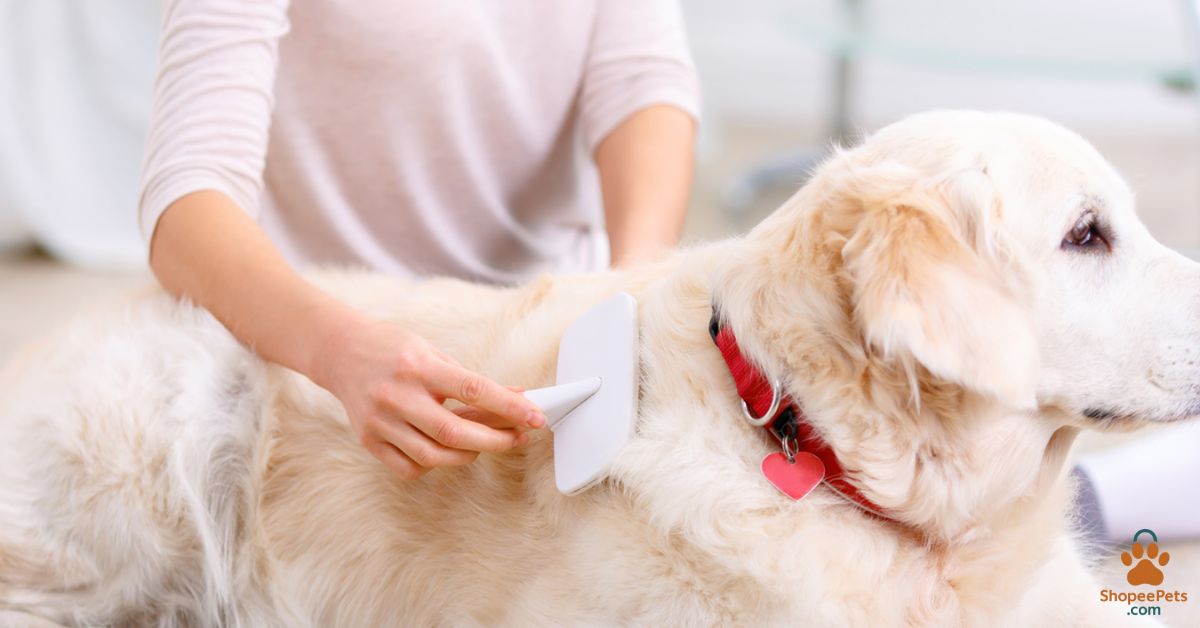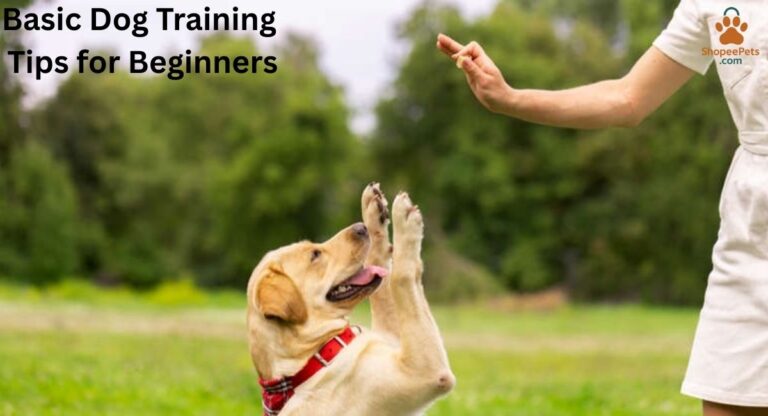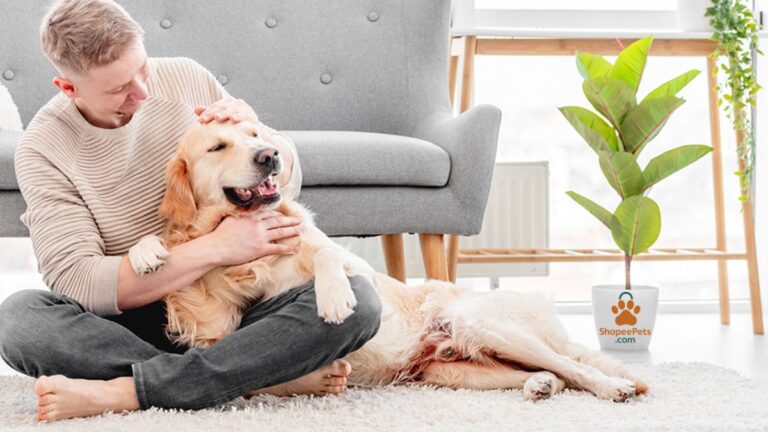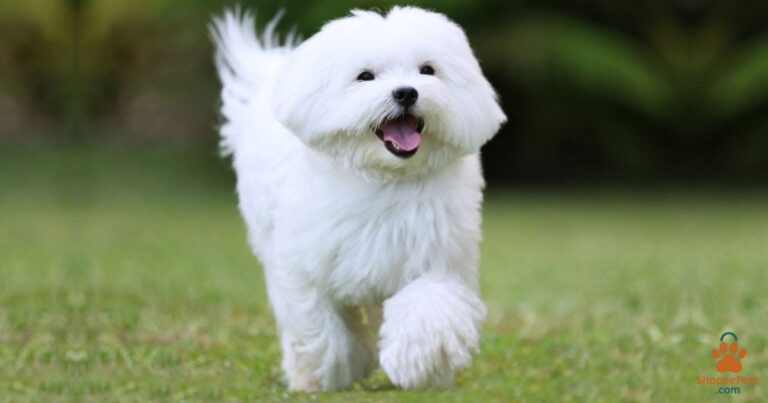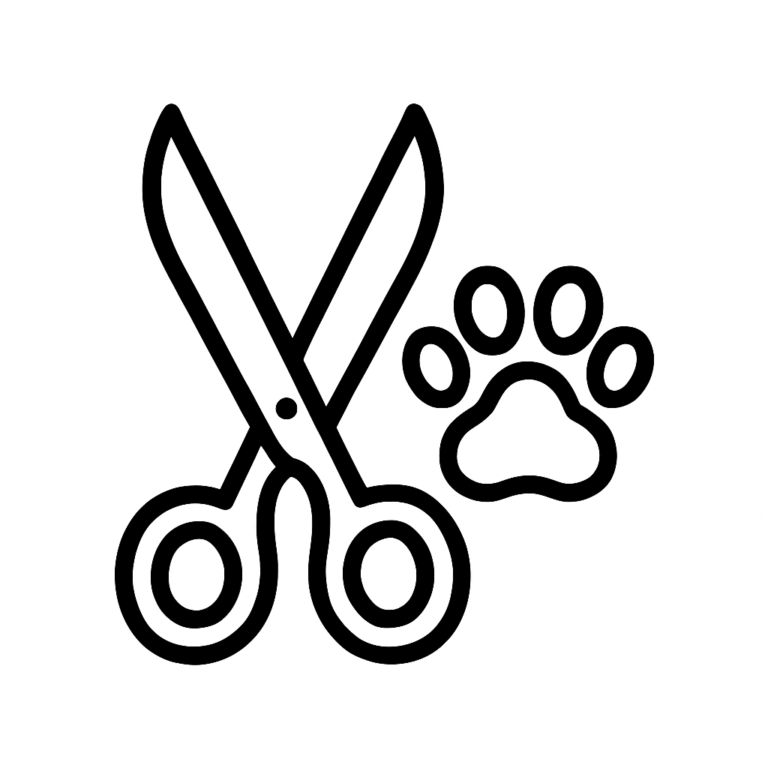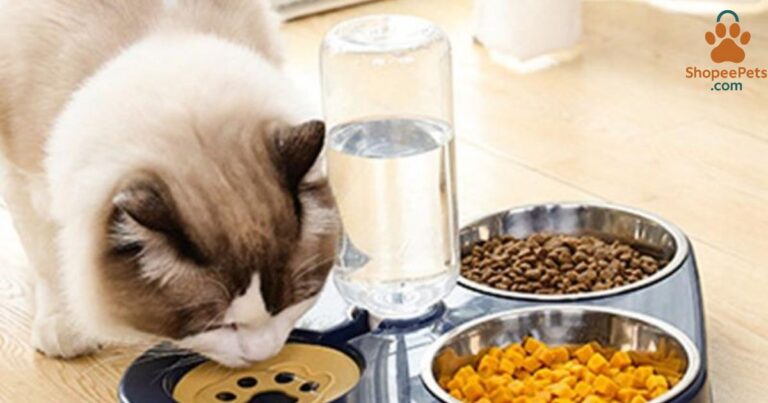Grooming Tips for Double-Coated Dog Breeds
What Is a Double Coat in Dogs?
Grooming Tips for Double-Coated Dog breeds are vital for keeping your dog’s coat healthy, shiny, and manageable. Double-coated breeds such as Huskies, Golden Retrievers, Border Collies, and Samoyeds have a dense undercoat and a protective outer coat that require special care. Without regular brushing, bathing, and maintenance, these coats can easily become tangled, trap dirt, and cause skin irritation. By following the right Grooming Tips for Double-Coated Dog owners, you can reduce shedding, prevent matting, and keep your dog comfortable in every season.
If you own a Husky, Golden Retriever, or German Shepherd, you already know how much fur these breeds can shed. The secret behind this never-ending fluff is their double coat. Unlike single-coated dogs, double-coated breeds have two layers of fur:
- Undercoat – A soft, dense layer that works as insulation. It keeps the dog warm in winter and cool in summer.
- Topcoat (Guard hairs) – A layer of coarse, longer hairs that protect against dirt, UV rays, and water.
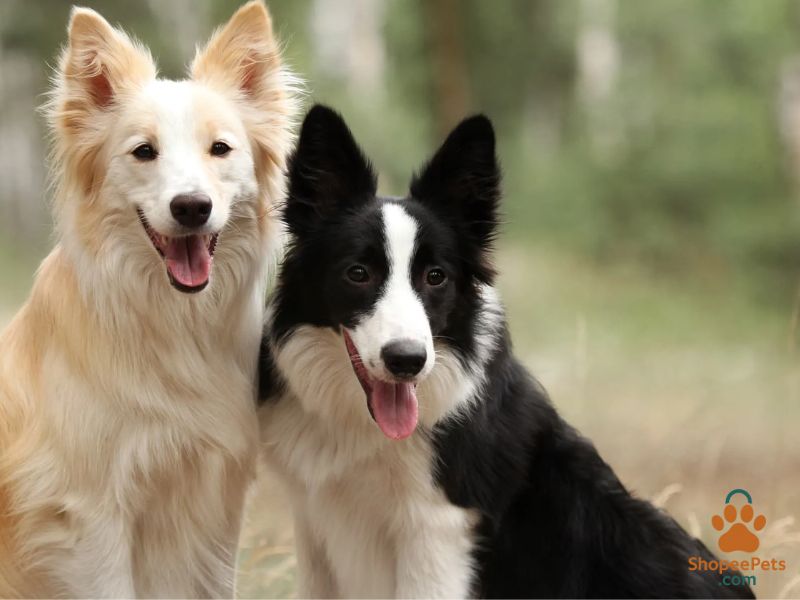
This coat combination is nature’s way of helping dogs survive in different climates. But it also means owners must follow specific grooming practices to prevent matting, excessive shedding, and skin problems.
Examples of Double-Coated Breeds
| Coat Type | Example Breeds | Grooming Difficulty |
|---|---|---|
| Short | Beagle, Labrador Retriever | Easy |
| Medium | Golden Retriever, Border Collie | Moderate |
| Long | Collie, Newfoundland | High |
| Arctic | Samoyed, Siberian Husky, Pomeranian | Very High |
| Wired | Wirehaired Dachshund, Norwich Terrier | Moderate |
👉 Most owners are surprised to learn that shaving a double-coated dog doesn’t “help” in summer. In fact, it can damage the natural growth cycle of the coat. We’ll cover this myth later in the article.
Why Grooming Double-Coated Dogs Is So Important
Many dog owners believe that their pup’s coat will “take care of itself,” but when it comes to double-coated breeds, grooming is not optional—it’s essential. These dogs are genetically designed to shed their undercoat heavily during seasonal changes, and if you don’t manage it properly, it can lead to health and hygiene problems.
Key Benefits of Grooming a Double Coat
| Benefit | Why It Matters | LSI Keywords |
|---|---|---|
| Controls Shedding | Removes loose undercoat before it spreads all over your house | shedding season, dog hair removal |
| Prevents Matting | Mats trap dirt, bacteria, and moisture, leading to skin irritation | tangled fur, matted coat, grooming mistakes |
| Regulates Body Temperature | A clean, brushed coat keeps airflow moving, helping in both hot and cold climates | dog coat health, natural insulation |
| Protects Skin | Brushing spreads natural oils, preventing dryness and infections | skin care for dogs, natural coat oils |
| Strengthens Bond | Grooming time doubles as bonding time between owner and pet | dog grooming routine, bonding with pets |
The Shedding Cycle
Most double-coated dogs shed their undercoat twice a year:
- Spring – shedding the thick winter coat
- Fall – shedding the lighter summer coat
However, in warmer climates or indoor lifestyles, they may shed all year round. This means regular grooming is not just seasonal—it’s a year-round responsibility.
👉 For example, a Golden Retriever living in Canada may shed primarily in spring and fall, but the same breed in California might shed continuously due to warmer weather.
Skin Health and Grooming Connection
When a dog’s undercoat is neglected, it compresses against the skin, trapping moisture and heat. This can cause:
- Hot spots
- Skin infections
- Foul odor
- Excessive itching
Regular brushing allows the skin to breathe, distributes natural oils, and keeps the coat shiny and healthy.
Essential Grooming Tools & Brushing Guide for Double-Coated Dogs
When it comes to grooming a double-coated dog breed, the right tools make all the difference. Using the wrong brush can damage the coat, irritate the skin, or leave tangles behind. Professional groomers and experienced dog owners recommend a combination of slicker brushes, undercoat rakes, combs, and deshedding tools to maintain coat health.
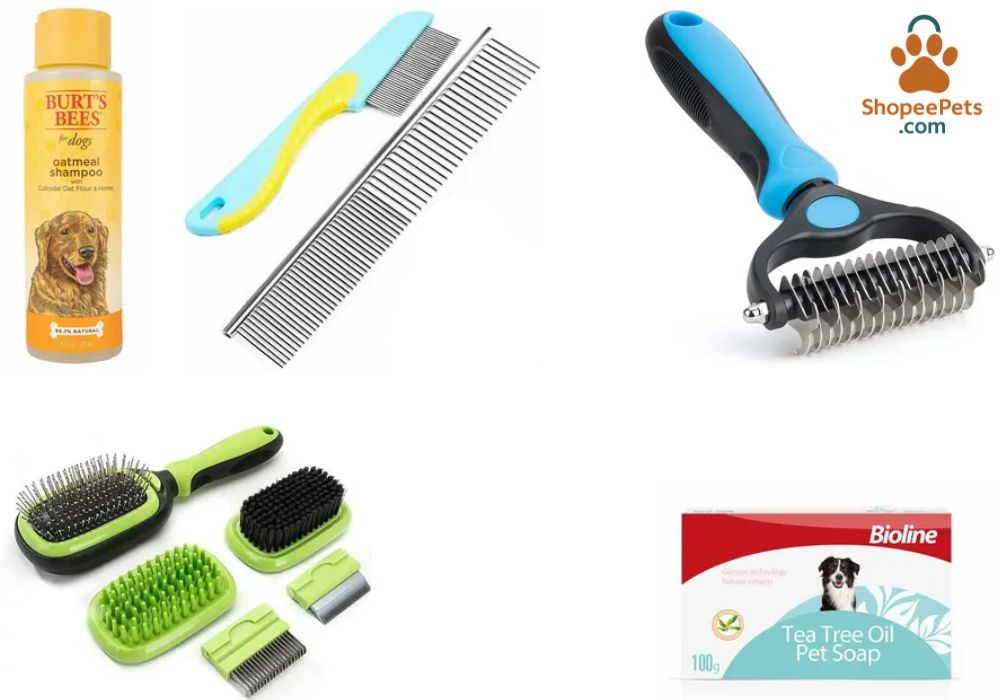
Must-Have Grooming Tools for Double-Coated Dogs
| Grooming Tool | Purpose | Recommended For | LSI Keywords |
|---|---|---|---|
| Slicker Brush | Removes loose fur, detangles, prevents matting | Puppies & adult dogs with medium to long coats | slicker brush for dogs, detangling double coats |
| Undercoat Rake | Reaches deep into the dense undercoat to pull out dead hair | Breeds like Husky, German Shepherd, Golden Retriever | undercoat removal, deshedding rake |
| Dematting Comb | Breaks tough knots without pulling the skin | Long-haired breeds prone to mats | dematting tool, remove tangles safely |
| Shedding Blade | Helps during peak shedding season to remove large amounts of loose fur | Heavy shedders like Labradors & Samoyeds | dog shedding solution, coat maintenance |
| Bristle Brush / Grooming Glove | Finishes the coat, spreads oils, gives shine | All double-coated dogs for final touch | bristle brush, natural coat oils |
| High-Velocity Dryer | Blows out loose undercoat after a bath | Thick-coated breeds (e.g., Newfoundland, Malamute) | drying dogs, blow out shedding fur |
🐕 Pro Tip: Always choose grooming tools with soft grips and stainless-steel pins to ensure comfort for both you and your dog.
Brushing Techniques for Double-Coated Dogs
1. Start With a Slicker Brush
- Use gentle strokes in the direction of hair growth.
- For shedding season, brush in sections—part the fur with your hand and work through the undercoat.
- Always be mindful around sensitive areas like the belly, tail base, and behind the ears.
2. Follow With an Undercoat Rake
- Place the rake at the base of the coat and pull through gently.
- This tool mimics the natural shedding process, helping release the undercoat.
- Best for breeds like Huskies, Retrievers, and Collies.
3. Handle Mats with a Dematter Comb
- Work slowly through knots.
- Never pull directly; instead, separate mats into smaller sections before combing.
- If a knot is too stubborn, trim carefully or consult a professional groomer.
4. Use a Grooming Comb for Finishing Touches
- Run a wide-tooth comb through the entire coat to check for any remaining tangles.
- Switch to a fine-tooth comb around the face, ears, and paws.
5. Finish With a Bristle Brush or Grooming Glove
- Smooth down the outer coat.
- Spread natural oils evenly for shine and skin health.
- Leaves the coat soft, shiny, and free of static.
Grooming Frequency
| Breed Type | Brushing Frequency | Notes |
|---|---|---|
| Short Double Coats (Beagle, Labrador) | 1–2 times a week | Focus on shedding blade during spring/fall |
| Medium Double Coats (Golden Retriever, Border Collie) | 2–3 times a week | Pay attention to feathering hair & tail |
| Long Double Coats (Collie, Newfoundland) | 3–4 times a week | Prevent mats, especially behind ears & belly |
| Arctic Breeds (Husky, Samoyed, Malamute) | 3–5 times a week | Heavy shedders; undercoat rake is essential |
| Wiry Double Coats (Terriers, Dachshunds) | 1–2 times a week | May need hand-stripping instead of shaving |
Bathing Guide for Double-Coated Dogs
Bathing a double-coated dog breed is not as simple as just lathering and rinsing. Unlike single-coated dogs, these breeds have two distinct layers – a dense insulating undercoat and a protective outer guard coat. If you don’t bathe and dry them properly, you risk trapping moisture in the undercoat, which can cause skin infections, matting, and foul odor.
Let’s break down the when, how, and what to use while bathing your double-coated dog.
How Often Should You Bathe a Double-Coated Dog?
Bathing too frequently can strip the natural oils and make the coat dry, dull, or itchy. On the other hand, delaying baths for too long can cause tangles and dirt build-up.
| Coat Type | Recommended Bath Frequency | Notes |
|---|---|---|
| Short Double Coats (e.g., Labrador, Beagle) | Every 6–8 weeks | Use mild shampoo; focus on odor control |
| Medium Double Coats (e.g., Golden Retriever, Collie) | Every 4–6 weeks | Rinse thoroughly to prevent shampoo residue |
| Long Double Coats (e.g., Newfoundland, Tibetan Mastiff) | Every 3–5 weeks | Extra conditioning needed for feathering |
| Heavy Shedders (e.g., Husky, Malamute, Samoyed) | Every 3–4 weeks (especially during shedding season) | Bathing helps loosen undercoat fur |
| Active Outdoor Dogs | As needed | If dirty/muddy, spot clean between baths |
👉 Pro Tip: If your dog spends a lot of time indoors, you can go longer between baths, focusing on brushing more than bathing.
Step-by-Step Bathing Process for Double-Coated Dogs
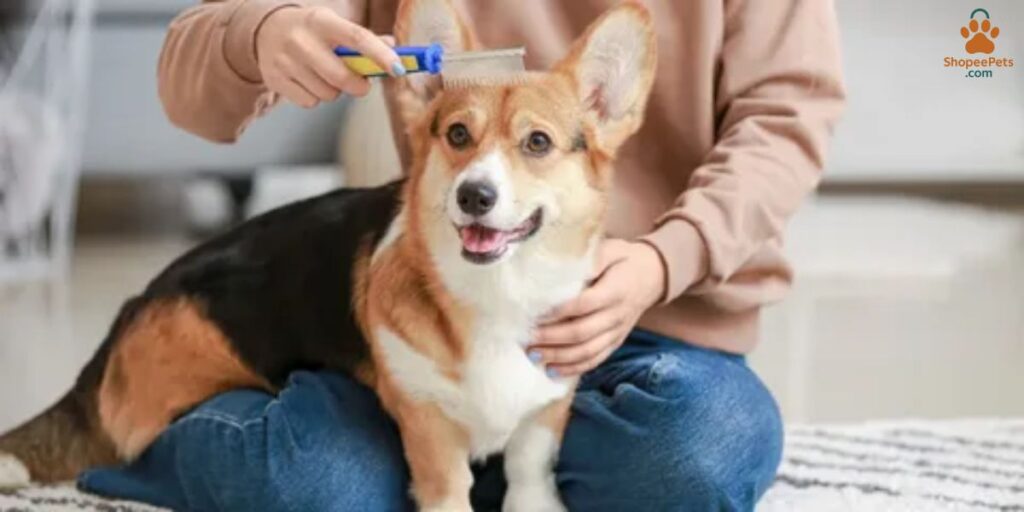
Pre-Bath Brushing
- Always brush your dog thoroughly before bathing.
- Removing loose undercoat prevents tangles from turning into mats when wet.
- Use a slicker brush + undercoat rake combo.
Choose the Right Shampoo & Conditioner
- Use a pH-balanced dog shampoo designed for sensitive skin.
- Avoid human shampoos (too harsh for dogs).
- Conditioners are essential for long-coated and heavy-shedding breeds.
| Product Type | Purpose | Best For |
|---|---|---|
| De-shedding Shampoo | Helps loosen dead undercoat | Huskies, Shepherds |
| Moisturizing Conditioner | Prevents dryness and static | Golden Retrievers, Collies |
| Oatmeal Shampoo | Soothes itchy skin | Dogs with allergies |
| Whitening Shampoo | Brightens white coats | Samoyeds, Great Pyrenees |
Bathing Technique
- Use lukewarm water (never hot).
- Wet the coat completely – it may take longer for water to penetrate the dense undercoat.
- Apply shampoo in sections: start from the neck, then back, belly, legs, and tail.
- Massage gently to reach the undercoat without tangling fur.
- Rinse thoroughly – leftover shampoo can cause skin irritation and dandruff.
Drying a Double Coat (Most Important Step!)
- Towel dry first to absorb excess water.
- Use a high-velocity dryer (HV dryer) to blow out moisture from the undercoat.
- Never let your dog “air dry” naturally – it can trap dampness in the undercoat.
- Brush again after drying to remove loosened fur.
| Drying Method | Pros | Cons |
|---|---|---|
| Towel Dry Only | Quick, easy | Leaves undercoat damp, risk of odor |
| HV Dryer | Deep drying, removes loose fur | Noisy, some dogs may need training |
| Fan + Towel | Good for anxious dogs | Takes longer |
| Air Dry (Not Recommended) | Natural | Risk of matting, bacteria growth |
According to AKC, drying is as crucial as bathing itself, especially for thick-coated breeds.
Post-Bath Brushing & Final Touches
- Once fully dry, brush again to remove shed fur released during bathing.
- Apply a leave-in conditioner spray for shine and protection.
- Check ears, paws, and underarms for trapped moisture.
Common Bathing Mistakes to Avoid
❌ Bathing too frequently (strips natural oils)
❌ Not brushing before the bath (causes tangling)
❌ Using human shampoo (pH imbalance for dogs)
❌ Incomplete rinsing (leads to itchiness & dandruff)
❌ Letting a double-coated dog air-dry (trapped moisture = infections)
Nail, Paw, and Ear Care for Double-Coated Dogs
When we think of grooming double-coated breeds, most people focus only on brushing and bathing. But healthy nails, clean paws, and fresh ears are equally important for overall dog health. Ignoring these areas can lead to painful infections, posture problems, and discomfort for your furry friend.
You also read our blog for gromming tips your pets.
Let’s break this down step by step.
Why Nail, Paw, and Ear Care Matters
- Nails that grow too long can cause joint strain and make walking painful.
- Dirty paws carry bacteria, allergens, and mud that can damage your home and your dog’s skin.
- Unclean ears (especially in floppy-eared double-coated breeds) are prone to wax build-up and infections.
If you’re already following a proper dog grooming routine, adding nail and ear care makes it truly complete.
Nail Care for Double-Coated Breeds
How Often Should You Trim Dog Nails?
On average, a dog’s nails should be trimmed every 3–4 weeks, but it depends on their lifestyle.
| Dog Lifestyle | Nail Growth & Wear | Trim Frequency |
|---|---|---|
| Active outdoor dogs (running on concrete, hiking) | Natural wear | Every 6–8 weeks |
| Indoor dogs (carpets, smooth flooring) | Faster growth, less wear | Every 3–4 weeks |
| Senior dogs | Slower metabolism but less activity | Every 3–5 weeks |
| Puppies | Fast growth | Every 2–3 weeks |
👉 Pro Tip: If you hear a “clicking sound” when your dog walks on hard floors, it’s trimming time.
Tools You’ll Need
- Dog nail clippers (scissor or guillotine type)
- Nail grinder/Dremel tool (smooth edges, avoids cracks)
- Styptic powder (to stop bleeding if quick is cut accidentally)
Nail Trimming Technique
- Hold your dog’s paw gently but firmly.
- Identify the quick (pinkish vein inside the nail). Avoid cutting too close.
- Clip small sections at a time.
- Smooth sharp edges with a grinder.
- Reward your pup with a treat after trimming.
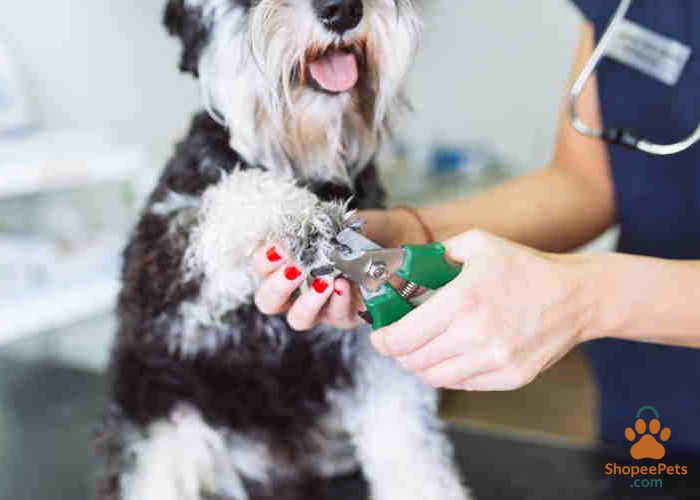
📌 Important: Double-coated breeds like Huskies or Shepherds often have dewclaws (extra nails higher up the paw). Don’t forget to trim those too.
Paw Care for Double-Coated Breeds
Paws are your dog’s natural shoes. They need protection from heat, cold, and rough surfaces.
Check Between Toes & Pads
- Remove dirt, pebbles, and grass seeds after outdoor walks.
- Trim excess fur between paw pads (it traps mud and ice).
Moisturize Paw Pads
- Use a dog-safe balm or coconut oil to prevent dryness and cracks.
- Avoid human lotions (toxic for dogs).
Seasonal Paw Care
| Season | Paw Risks | Care Tip |
|---|---|---|
| Summer | Hot pavement burns | Walk in early morning/evening, use paw balm |
| Winter | Ice, snow, salt chemicals | Rinse paws after walks, trim fur between pads |
| Monsoon/Rainy | Mud, fungal infections | Dry paws thoroughly after walks |
Ear Care for Double-Coated Dogs
Ears are a sensitive grooming area. Breeds like Golden Retrievers or Collies with floppy ears are more prone to ear infections because moisture and dirt get trapped.
How Often Should You Clean Dog Ears?
- Monthly for most dogs
- Weekly for floppy-eared breeds
- After swimming or bathing (always dry ears!)
Ear Cleaning Steps
- Inspect first – Look for redness, swelling, or foul odor.
- Apply vet-approved ear cleaning solution (never use alcohol or hydrogen peroxide).
- Massage the ear base gently for 20–30 seconds.
- Let your dog shake its head.
- Wipe excess solution and dirt with cotton (never insert cotton swabs deep inside).
Signs of Ear Problems
🚩 If you notice these, visit your vet immediately:
- Constant head shaking
- Brown or yellow discharge
- Strong odor from ears
- Dog scratching ears excessively
Quick Grooming Checklist for Nails, Paws & Ears
- ✅ Trim nails every 3–4 weeks
- ✅ Smooth sharp edges with a grinder
- ✅ Moisturize paw pads regularly
- ✅ Check between toes for dirt or pebbles
- ✅ Trim fur between paw pads in winter
- ✅ Clean ears monthly (weekly for floppy-eared breeds)
- ✅ Always dry ears after bath/swimming
To Shave or Not to Shave a Double Coat?
When summer arrives, many dog owners think shaving their double-coated dog will help them stay cool. But the truth is, shaving can do more harm than good.
Double coats are specially designed by nature to protect dogs from both heat and cold. Removing them can permanently damage the coat and affect your dog’s comfort.
What Happens If You Shave a Double Coat?
A dog’s double coat has two layers:
- Topcoat (Guard Hairs): Protects against dirt, sunburn, and water.
- Undercoat: Provides insulation, keeping dogs warm in winter and cool in summer.
When you shave:
- ❌ The undercoat grows back faster than the topcoat, creating an uneven texture.
- ❌ Hair may grow back patchy or not at all in some areas.
- ❌ Skin is exposed to UV rays, leading to sunburn and increased risk of skin cancer.
- ❌ Dogs lose their natural temperature regulation system.
Instead of shaving, regular brushing and bathing (as explained in our double coat grooming guide) helps keep your dog cool and comfortable.
Why People Think Shaving Helps (But It Doesn’t)
| Myth | Reality |
|---|---|
| Shaving makes dogs feel cooler | Double coat regulates temperature naturally |
| Shaving reduces shedding | Shedding continues; only shorter hair falls |
| Shaving prevents matting | Regular brushing is the true solution |
| Shaving helps in summer | Can actually cause overheating & sunburn |
📌 Fact Check: According to veterinarians, double-coated breeds like Huskies, Shepherds, and Retrievers should never be shaved unless medically necessary.
When Is Shaving Acceptable?
There are rare cases where shaving may be recommended by a vet or professional groomer:
- Severe matting that can’t be brushed out
- Certain skin conditions or medical treatments
- Surgery areas that require hair removal
⚠️ Always consult a professional groomer or vet before considering shaving.
Alternatives to Shaving
Instead of shaving, follow these steps to keep your double-coated dog comfortable in summer:
- Brush Frequently – Remove dead undercoat to improve air circulation.
- Regular Bathing – Use dog-safe shampoo and conditioner to clean coat.
- De-Shedding Tools – Tools like undercoat rakes help manage heavy shedding seasons.
- Trim, Don’t Shave – Trimming sanitary areas, paw pads, and feathering fur is safe.
- Provide Cooling Solutions – Fresh water, shaded areas, cooling mats, and air circulation.
Signs Your Dog Is Overheated
Even with proper grooming, dogs can overheat in summer. Watch for these signs:
- Excessive panting
- Drooling
- Lethargy
- Vomiting
- Bright red gums
👉 If these symptoms appear, move your dog to a cool area immediately and consult a vet.
Quick Grooming Takeaway
- ❌ Don’t shave double-coated dogs (except for medical reasons).
- ✅ Use de-shedding brushes to manage shedding.
- ✅ Bathe and dry properly during summer.
- ✅ Trim paw pads, sanitary areas, and feathering (not full shave).
- ✅ Provide cooling aids to help dogs in hot weather.
Seasonal Grooming Guide for Double-Coated Breeds
Double-coated dogs need different grooming care in every season. Their coat naturally changes (shedding cycles) to adapt to weather, but without proper grooming, matting, shedding, and discomfort increase.
Let’s break it down season by season:
🏖️ Summer Grooming Tips for Double-Coated Dogs
| Task | Why It’s Important | Best Practice |
|---|---|---|
| Brushing | Removes heavy undercoat & improves airflow | Brush 4–5 times a week with an undercoat rake |
| Bathing | Prevents heat rash & keeps skin clean | Bathe once every 3–4 weeks with cooling dog shampoo |
| De-shedding | Heavy shedding occurs in summer | Use de-shedding tools during peak shedding |
| Trimming | Keeps dog neat without shaving | Trim paw pads, sanitary areas, and long feathering fur |
| Hydration & Cooling | Prevents overheating | Provide shade, cooling mats, and fresh water |
As explained earlier in our don’t shave section, brushing is a much safer way to keep dogs cool than removing their coat.
🍂 Autumn Grooming Tips
Autumn is the transition season when dogs shed their summer coat to prepare for winter.
- Increase Brushing Frequency – Brushing 3–4 times a week helps remove loose fur.
- Check for Matting – Undercoat thickens, so prevent tangles early.
- Bathing – Monthly baths are enough; focus on drying thoroughly.
- Ear & Paw Care – Moist weather can cause ear infections and paw issues.
📌 Pro Tip: Use a high-velocity dryer after baths to remove loose fur and reduce shedding inside the house.
❄️ Winter Grooming Tips
In winter, the undercoat becomes thicker and denser to keep your dog warm.
| Task | Why It’s Important | Best Practice |
|---|---|---|
| Brushing | Prevents matting from dense winter coat | Brush 2–3 times a week |
| Bathing | Too many baths strip natural oils | Bathe every 4–6 weeks |
| Moisturizing | Cold weather causes dry skin | Use dog-safe conditioner or moisturizing spray |
| Nail Care | Less outdoor activity = faster nail growth | Trim nails regularly |
| Check Snow/Ice Build-up | Protects paw pads | Use paw balm or dog booties |
🌧️ Monsoon/Rainy Season Grooming Tips
Rainy season brings humidity, mud, and fungal infections. Double-coated breeds need extra care:
- Dry Thoroughly After Rain – Always towel-dry and use a blow dryer to prevent infections.
- More Frequent Brushing – Prevents matting from damp fur.
- Use Anti-Fungal Shampoos – Protect against skin infections.
- Ear Care is Crucial – Moisture can lead to ear infections, especially in floppy-eared breeds.
- Paw Protection – Clean paws after walks to avoid bacteria build-up.
📌 Seasonal Grooming Calendar for Double-Coated Dogs
| Season | Brushing | Bathing | Special Care |
|---|---|---|---|
| Summer | 4–5 times a week | Every 3–4 weeks | De-shedding, cooling care |
| Autumn | 3–4 times a week | Monthly | Prevent matting |
| Winter | 2–3 times a week | Every 4–6 weeks | Moisturizing & paw care |
| Monsoon | 3–4 times a week | Every 2–3 weeks | Anti-fungal & drying care |
Common Grooming Mistakes Owners Make with Double-Coated Breeds
Many owners, even with the best intentions, make mistakes that harm their double-coated dog’s health. Avoiding these mistakes is just as important as grooming itself.
❌ Shaving the Double Coat
- The biggest mistake is shaving.
- A double coat regulates body temperature — shaving disrupts this natural system.
- Dogs are left vulnerable to sunburn, heatstroke, and skin infections.
👉 (As explained earlier in our seasonal grooming guide, brushing and de-shedding is the safer way to keep your dog cool in summer.)
❌ Over-Bathing
- Too many baths strip the coat of natural oils.
- This leads to dry, flaky skin and makes fur brittle.
- Ideal: Bathe only once every 3–6 weeks depending on activity level and weather.
❌ Using Human Shampoos
- Human shampoos are too acidic for a dog’s skin.
- They damage the coat, cause itching, and increase risk of dandruff.
- Always use a pH-balanced dog shampoo.
❌ Neglecting the Undercoat
- Some owners brush only the top layer (guard hair).
- The undercoat remains tangled, leading to painful matting.
- Always use an undercoat rake or slicker brush.
❌ Skipping Nail Trimming
- Overgrown nails change posture and cause joint pain.
- They may even split or break, which is very painful for dogs.
- Trim every 3–4 weeks or as needed.
❌ Ignoring Ear & Dental Care
- Moisture in ears = higher risk of ear infections.
- Neglecting teeth = tartar buildup, gum disease, bad breath.
- Clean ears weekly and brush teeth at least 2–3 times a week.
❌ Not Drying Properly After Baths or Rain
- Leaving moisture trapped in the dense coat leads to fungal infections.
- Always use a high-velocity dryer or towel + blow dryer combo.
📌 Quick Table: Grooming Mistakes to Avoid
| Mistake | Why It’s Harmful | Correct Approach |
|---|---|---|
| Shaving | Removes natural insulation, risks skin burns | Brush & de-shed instead |
| Over-bathing | Strips oils, causes dryness | Bathe every 3–6 weeks |
| Human shampoo | Wrong pH, causes irritation | Use dog-safe shampoo |
| Skipping undercoat | Leads to matting | Use undercoat rake |
| No nail trim | Causes pain, posture issues | Trim every 3–4 weeks |
| No ear/teeth care | Infections, dental disease | Weekly cleaning |
| Not drying | Fungal infections | Use dryer after baths |
Best Grooming Tools for Double-Coated Dogs
Using the right grooming tools makes a huge difference in coat health.
Essential Tools
- Undercoat Rake – Removes loose fur from the dense undercoat.
- Slicker Brush – Perfect for detangling mats.
- De-shedding Tool (e.g., Furminator) – Controls seasonal shedding.
- High-Velocity Dryer – Blows out dead undercoat after baths.
- Nail Clippers or Grinder – Keeps nails short and smooth.
- Dog-safe Shampoo & Conditioner – Maintains coat shine.
- Ear Cleaning Solution – Prevents infections.
- Paw Balm – Protects pads in winter & summer.
As mentioned in our puppy grooming section, starting with the right tools early helps dogs stay comfortable during grooming.
When to Seek Professional Grooming Help
Even with regular home grooming, sometimes a professional groomer is the best option.

Signs You Need a Professional Groomer
- Severe matting you can’t detangle.
- Dog resists brushing or nail trimming.
- Coat looks dull, dry, or patchy.
- Skin irritation, hotspots, or bald patches.
- Excessive shedding not controlled by brushing.
Benefits of Professional Grooming
- Access to specialized tools.
- Proper drying techniques.
- Experience in handling anxious dogs.
- Full-service grooming (brushing, nail care, ears, sanitary trims).
According to AKC, professional groomers can help maintain the double coat’s health without damaging its natural structure.
Grooming Schedule for Double-Coated Dogs
Every breed and lifestyle is different, but here’s a general guide:
| Grooming Task | Frequency |
|---|---|
| Brushing | 3–5 times a week |
| Bathing | Every 4–6 weeks |
| De-shedding | During seasonal sheds (spring/summer) |
| Nail trimming | Every 3–4 weeks |
| Ear cleaning | Weekly |
| Teeth brushing | 2–3 times a week |
| Professional grooming visit | Every 6–8 weeks |
Nutrition & Grooming – The Hidden Connection
Diet plays a huge role in coat health. A well-groomed dog with poor nutrition won’t have a shiny coat.
Foods for a Healthy Coat
- Omega-3 & Omega-6 fatty acids (fish oil, flaxseed).
- High-quality protein (chicken, beef, fish).
- Vitamins A, E, and Biotin.
- Hydration (fresh water always).
Just like regular grooming, a balanced diet is part of overall dog care and contributes to long-term coat health.
Grooming Tips by Age – Puppies vs. Seniors
Grooming Puppies
- Start brushing early to make it fun.
- Use soft brushes first.
- Keep sessions short and positive.
- Reward with treats.
Grooming Senior Dogs
- Be gentle with joints.
- Use softer brushes to avoid discomfort.
- Pay extra attention to nails (less exercise = faster growth).
- Monitor skin for dryness or lumps.
Fun & Stress-Free Grooming
Grooming should not feel like a punishment.
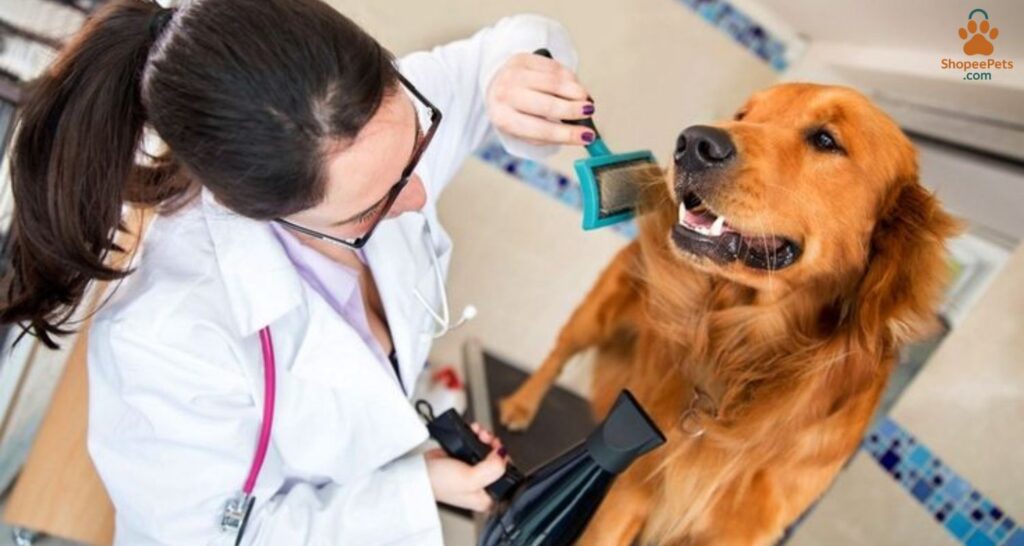
- Always reward with treats and praise.
- Groom after exercise when the dog is calm.
- Keep sessions short but frequent.
- Use grooming as bonding time.
Final Grooming Checklist for Double-Coated Dogs
✅ Brush undercoat at least 3–5 times a week
✅ Bathe only when needed (4–6 weeks)
✅ Never shave the coat
✅ Trim nails regularly
✅ Clean ears weekly
✅ Brush teeth 2–3 times a week
✅ Moisturize skin in dry weather
✅ Use the right tools
✅ Adjust grooming with seasons
✅ Seek professional help if needed
🐾 Conclusion
Double-coated breeds may look fluffy and adorable, but their coat requires special care throughout the year. By following a regular grooming routine, choosing the right tools, and adjusting techniques according to the season, you can keep your dog’s coat healthy, shiny, and comfortable.
Avoid common mistakes like shaving or over-bathing, pay attention to nails, ears, and teeth, and don’t hesitate to seek professional grooming help when needed. Grooming isn’t just about looks—it’s about keeping your dog happy, stress-free, and healthy.
So, whether you’re brushing away seasonal shedding in summer or protecting paws in winter, every grooming step strengthens your bond with your furry friend. Start today—your dog (and your home) will thank you! 🐕✨
📌 Meta Description
Grooming tips for double-coated dog breeds made easy! Learn how to brush, bathe, and care for shedding dogs with a complete grooming guide.
FAQs
How to properly groom a double-coated dog?
To properly groom a double-coated dog, use a slicker brush and undercoat rake to remove loose fur, prevent matting, and maintain coat health.
Do double-coated dogs need grooming?
Yes, double-coated dogs need regular grooming to manage shedding, prevent tangles, and keep their skin healthy.
How often should a double coat be groomed?
Most double-coated breeds should be brushed at least 2–3 times per week, and more often during heavy shedding seasons.
What are the 7 steps of grooming a dog?
The 7 steps are: brushing, bathing, drying, nail trimming, ear cleaning, teeth brushing, and coat finishing.
Can you shave a double-coated dog?
No, shaving a double-coated dog is not recommended because it damages the protective outer coat and affects natural insulation.
Which brush is best for double-coated dogs?
A slicker brush and undercoat rake are best tools for double-coated dog grooming, helping remove dead fur and prevent matting.
Why do double-coated dogs shed so much?
They shed seasonally to adapt to temperature changes, releasing their dense undercoat to stay comfortable.
Are double-coated dogs high maintenance?
Yes, double-coated dogs are considered high maintenance because their thick coats require frequent brushing and seasonal grooming.


Naeem – Founder, ShopeePets
Helping pet lovers choose the best with honest product reviews, practical advice, and trusted guidance for every pet owner.
Visit ShopeePets.com →